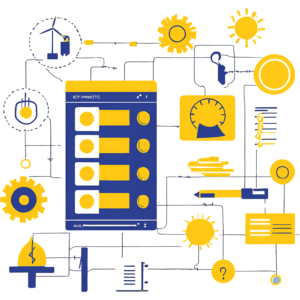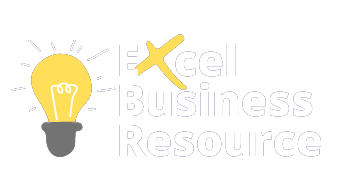No products in the cart.
Key KPIs to Evaluate Solar Energy Power Projects

You had invested millions of dollars in a solar energy project, which promised clean energy and high returns. But months have passed since, and you’re still far from what you’d expected – low output, cost spiraling out of control, and equipment failure.
This is one of the biggest challenges in the solar energy industry. While being one of the fastest-growing renewable energy sources, solar power projects are usually characterized by inefficiencies, unpredictable energy outputs, and financial risks. These problems can be solved by carefully tracking and analyzing Key Performance Indicators (KPIs).Consider KPIs to be the lifeblood of your solar project; they provide you with information on the health, effectiveness, and financial viability of your system.
We’ll go into the detail about the most crucial KPIs for assessing solar energy projects in this blog. You will discover how to maximize your performance, ensure profitability, and promote sustainability, regardless of your level of expertise as an energy professional or as a startup entrepreneur.
The Significance of KPIs in Solar Energy Projects
There is more to solar energy projects than simply setting up panels and hoping for the sun to shine. These are intricate systems that include financial planning, weather patterns, technology, and operational effectiveness. KPIs have a crucial role because they
- Optimize Performance: They help you address issues before they become more serious by pointing out inefficiencies.
- Assure Financial Viability: KPIs make sure your project stays profitable by monitoring expenses and production.
- Fulfill Regulatory Needs: KPIs assist you in adhering to grid regulations and avoiding fines.
- Encourage Long-Term Sustainability: Consistent monitoring guarantees that your system will continue to provide clean energy for many years to come.
12 Essential KPIs for Assessing Solar Energy Initiatives
Let’s examine the most important KPIs and how they address the problems that solar projects encounter.
1. The Performance Ratio (PR)
Problem: Although your solar panels are functioning, you’re not sure how well they’re turning sunshine into electrical power.
Solution: The Performance Ratio calculates the difference between the actual and theoretical maximum production. A PR of 85%, for instance, indicates that 85% of the sunlight is successfully transformed into electrical power.
Ways to Get Better: PR can be increased by routine maintenance, panel cleaning, and temperature monitoring.
2. Capacity Utilization Factor (CUF)
Problem: Your plant is not generating power when it should be.
Solution: CUF is the ability of the plant to utilize its capacity. If the CUF is low, it may reflect downtime or less-than-ideal weather.
Improvement: Have equipment failures rectified promptly, and schedule installations in high irradiance locations.
3. Specific Yield
Problem: You want to compare your plant to others, but you need an apples-to-apples comparison.
Solution: Specific Yield measures energy output per unit of installed capacity (kWh/kWp). It is ideal for the comparison of projects of different sizes.
Improvement: Quality panels and proper system design are required.
4. Inverter Efficiency
Problem: Inverters, which convert DC to AC power, waste energy if they are inefficient.
Solution: Inverter Efficiency measures the amount of energy lost in the conversion process. New inverters have efficiencies of 97-99%.
Improvement: Replace old inverters and schedule regular maintenance.
5. System Availability
Problem: Your plant is experiencing frequent outages, which means that it is not producing energy.
Solution: System Availability measures the percentage of time your plant is up and running. High availability means consistent energy output.
Improvement: Invest in predictive maintenance and respond quickly to system failures.
6. Solar Insolation
Problem: Output from your plant varies with the time of day.
Solution: This is measured by the amount of sunlight received over time. Knowing this helps predict what will be produced and sets up expectations.
Improvement: Invest in advanced weather forecasting tools, and optimize your panel orientation.
7. Cost of Energy per kWh
Problem: Producing energy is more expensive than anticipated, which reduces earnings.
Solution: The cost of generating one kilowatt-hour of energy is determined by this KPI.
Improvement: Cut expenses by improving system design, streamlining operations, and purchasing in bulk.
8. Deemed Generation
Problem: Your plant is unable to produce electricity due to outside factors like grid interruptions.
Solution: Deemed Generation calculates the amount of energy that could have been generated in the absence of outside disruptions. It is helpful while negotiating contract pay.
Improvement: Negotiate advantageous power purchase agreements (PPAs) and use battery storage to compensate for grid problems.
9. Revenue per Megawatt Hour (MWh)
The Problem: You don’t know if your project will be profitable.
Solution: This measure determines the amount of money made for each MWh generated.
Improvement: Optimize energy production while cutting expenses.
10. Analysis of Downtime
Problem: Production and revenue are lost due to high downtime.
Solution: Downtime Analysis tracks downtime events and their underlying causes.
Improvement: Put in place a suitable maintenance plan and keep an eye on the condition of the equipment at all times.
11. Efficiency of the Workforce
Problem: The issue is that ineffective labor management raises the price of delays and time.
Solution: Use digital tools to monitor employee productivity and optimize processes.
Improvement: For a quicker resolution, spend money on automation and training.
12. Production vs. Energy Consumption
Problem: Net output is decreased by high operating energy consumption.
Solution: This KPI contrasts the amount of energy generated and used during operations.
Improvement: Use energy-efficient equipment to reduce auxiliary energy use.
Challenges in Tracking Solar KPIs
Despite the availability of advanced tools, monitoring solar KPIs comes with its own set of challenges. Understanding these challenges is essential to address them effectively.
1. Data Accuracy
- Problem: Faulty sensors or incomplete data collection can result in misleading insights, leading to poor decision-making.
- Solution: Regular calibration and maintenance of monitoring equipment, combined with redundancy systems, ensure accurate data collection and reporting.
2. Weather Dependence
- Problem: Solar energy production is heavily dependent on weather conditions, which are inherently unpredictable.
- Solution: Integrating advanced weather analytics into monitoring systems allows for better prediction and planning, reducing the impact of unexpected weather changes.
3. Complexity of Integration
- Problem: Solar projects often rely on data from multiple sources, such as inverters, sensors, and weather stations. Combining these data streams into a unified system can be challenging.
- Solution: IoT devices and cloud-based platforms simplify integration by consolidating all data into a single dashboard, making it easier to analyze and act upon.
By investing in robust monitoring systems and addressing these challenges proactively, solar energy operators can ensure their projects run smoothly and efficiently.
Future Trends in Solar Energy KPI Evaluation
As technology advances, the methods and tools used to monitor solar KPIs are becoming more sophisticated. Here are some of the key trends shaping the future of solar energy monitoring:
1. AI and Machine Learning
- What to Expect: Artificial intelligence (AI) and machine learning algorithms are transforming the way solar plants are managed. These technologies can analyze vast amounts of data to identify patterns, predict equipment failures, and recommend maintenance schedules.
- Impact: Predictive analytics will minimize downtime and maintenance costs, ensuring solar plants operate at peak efficiency.
2. Big Data
- What to Expect: Big data analytics enables the analysis of historical and real-time data from multiple sources. This helps operators understand long-term trends, evaluate performance over time, and optimize energy production strategies.
- Impact: Enhanced decision-making and strategic planning for solar project growth.
3. IoT Sensors
- What to Expect: The Internet of Things (IoT) is playing a pivotal role in solar energy projects by enabling real-time monitoring of equipment and environmental conditions. IoT sensors can track metrics such as panel temperature, energy output, and system availability with precision.
- Impact: Automated adjustments based on real-time data will improve efficiency and reduce human intervention.
Conclusion
Solar energy projects have a lot of potential, careful monitoring and assessment are necessary for them to succeed. KPIs are the instruments that offer direction and clarity, guaranteeing that your solar plant runs profitably, efficiently, and sustainably.
You may address inefficiencies, cut expenses, and improve performance by concentrating on measures like performance ratio, capacity utilization, and inverter efficiency. And monitoring these KPIs has never been simpler with the correct equipment and tools.
So, whether you’re managing a small rooftop installation or a sprawling solar farm, start monitoring these KPIs today. It’s the key to unlocking the full potential of solar energy.
Facebook
Twitter
LinkedIn
-
What is Rule of 40 in SaaS? A Guide to Balancing Growth and Profitability
The SaaS industry is a battlefield where growth and profitability often pull businesses in opposite directions. As a founder or leader, you’ve likely asked yourself, should I focus on scaling faster or turning a profit? It’s a tough call. One wrong move and you risk burning cash too quickly or losing your competitive edge.Here’s the
January 27, 2025 Read more -
Pre-Money vs Post-Money Valuation: Understand Startup Funding like a Pro
You’re pitching to a group of venture capitalists, excited about the prospect of raising capital to launch your dream company. They ask you, “What’s your valuation? Suddenly, you’re faced with questions about ownership percentages, equity stakes, and terms you may not fully understand. Perhaps the most frequent pitfall facing founders is the understanding of pre
January 27, 2025 Read more -
How to Increase Profitability in a Coworking Space Business
Running a coworking space is an exciting journey but making it profitable is not always easy. While you’ve created the space for freelancers, startups, and remote workers to thrive, balancing operational costs, member retention and revenue generation feels like juggling too many balls at once. What’s worse? You may be stretched thin with your human
January 21, 2025 Read more
-
What is Rule of 40 in SaaS? A Guide to Balancing Growth and Profitability
The SaaS industry is a battlefield where growth and profitability often pull businesses in opposite directions. As a founder or leader, you’ve likely asked yourself, should I focus on scaling faster or turning a profit? It’s a tough call. One wrong move and you risk burning cash too quickly or losing your competitive edge.Here’s the
January 27, 2025 Read more -
Pre-Money vs Post-Money Valuation: Understand Startup Funding like a Pro
You’re pitching to a group of venture capitalists, excited about the prospect of raising capital to launch your dream company. They ask you, “What’s your valuation? Suddenly, you’re faced with questions about ownership percentages, equity stakes, and terms you may not fully understand. Perhaps the most frequent pitfall facing founders is the understanding of pre
January 27, 2025 Read more -
How to Increase Profitability in a Coworking Space Business
Running a coworking space is an exciting journey but making it profitable is not always easy. While you’ve created the space for freelancers, startups, and remote workers to thrive, balancing operational costs, member retention and revenue generation feels like juggling too many balls at once. What’s worse? You may be stretched thin with your human
January 21, 2025 Read more -
Why Capital Efficiency Important for SaaS Growth & Valuation
You have built an amazing SaaS product. The customers are signing up, and your team is growing, and everything is going great, but when you scale, you find that the cash flow is starting to dry out. The revenues aren’t supporting your expenses anymore, and the investors are losing interest. It is a nightmare scenario
January 13, 2025 Read more
Services
Company
Join our NewsLetter
Join our newsletter for the latest updates, exclusive content, and more. Enter your email below and never miss out!





